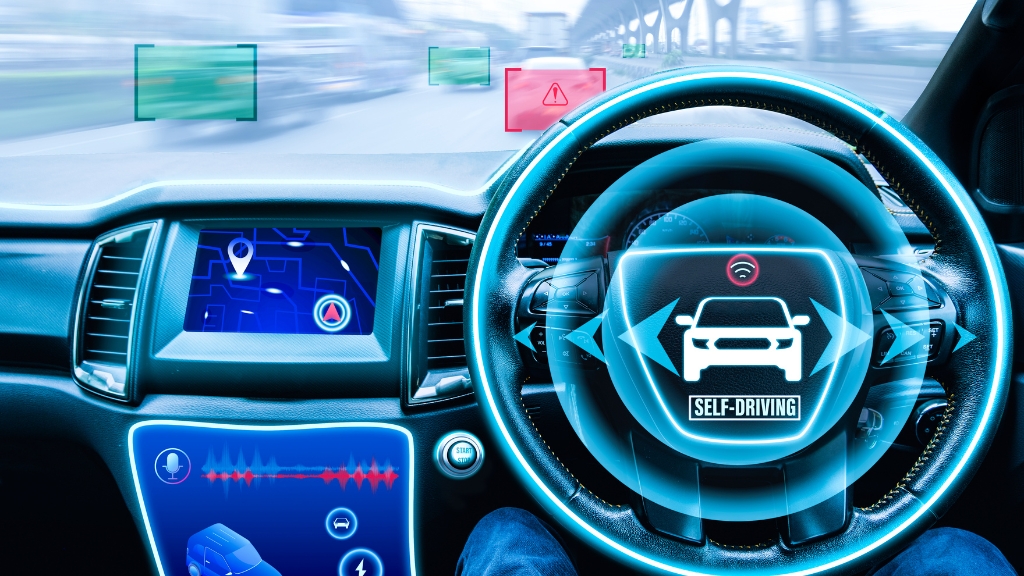Self-driving cars once felt like a far-off dream, but they’re quickly becoming a reality. From tech giants to automotive pioneers, everyone’s racing to perfect autonomous driving technology. It’s not just science fiction anymore—it’s reshaping how we think about transportation and mobility.
As exciting as it sounds, autonomous driving sparks plenty of debate. There’s the promise of safer roads and greater convenience, but also concerns about job losses, ethical dilemmas, and trust in AI. It’s a technology with incredible potential, but it’s not without its challenges.
So, where are we headed next? The future of autonomous driving holds both opportunities and uncertainties. Understanding the pros and cons can help us navigate this rapidly evolving landscape and prepare for what’s coming. Let’s explore what this revolution means for all of us.
Understanding Autonomous Driving
Autonomous driving refers to vehicles capable of operating without direct human intervention by leveraging advanced technologies. These systems prioritize safety, efficiency, and convenience while minimizing the need for manual control.
Levels Of Automation
Autonomous driving is classified into six levels as defined by the Society of Automotive Engineers (SAE).
- Level 0 (No Automation): The driver performs all driving tasks, with vehicles including basic exception alerts.
- Level 1 (Driver Assistance): Systems provide limited assistance, like adaptive cruise control or lane-keeping support.
- Level 2 (Partial Automation): Vehicles combine acceleration, braking, and steering automation, requiring active driver supervision. An example is Tesla’s Autopilot.
- Level 3 (Conditional Automation): The system controls all driving functions within specific conditions but requires the driver to intervene if limitations arise.
- Level 4 (High Automation): Vehicles operate independently in defined environments, like urban areas, though manual control remains an option.
- Level 5 (Full Automation): Operational in all conditions without human involvement, these vehicles are the ultimate goal but remain under development.
Key Technologies Behind Autonomous Vehicles
Several advanced technologies power autonomous vehicles, ensuring accuracy and reliability.
- Artificial Intelligence (AI): AI processes data for decision-making, controlling navigation and object detection. Machine learning enhances vehicle adaptability in diverse scenarios.
- Sensors: LIDAR, radar, cameras, and ultrasonic sensors detect objects, obstacles, and road signals, ensuring precise situational awareness.
- Mapping Systems: High-definition (HD) mapping integrates real-time data for accurate route planning and environmental interpretation.
- Connectivity: Vehicle-to-Everything (V2X) communication connects cars with infrastructure, enhancing safety with traffic updates and collision avoidance signals.
- Advanced Hardware: Processors and GPUs enable rapid data analysis, ensuring quick and effective autonomous responses.
These technologies collectively enable self-driving cars to function securely and efficiently while adapting to dynamic road conditions.
The Pros Of Autonomous Driving
Autonomous driving presents transformative advantages across multiple areas. By leveraging cutting-edge technologies, these systems promote safer, more efficient, and inclusive transportation.
Increased Safety
Autonomous vehicles significantly reduce human errors, which cause over 90% of traffic accidents according to the National Highway Traffic Safety Administration (NHTSA). Advanced systems like collision avoidance, lane-keeping assistance, and pedestrian detection enhance situational awareness. For example, features such as automatic emergency braking help prevent crashes in real-time.
Reduced Traffic Congestion
Optimized driving patterns of autonomous systems improve traffic flow by reducing sudden stops, variable speeds, and bottlenecks. Features like platooning, where vehicles maintain short but safe distances, efficiently manage road space. Studies by the Texas A&M Transportation Institute indicate that coordinated self-driving vehicles could cut traffic delays by up to 35%.
Environmental Benefits
Autonomous vehicles improve fuel efficiency by minimizing harsh acceleration, braking, and idling. Electric self-driving cars magnify this impact by cutting greenhouse gas emissions. Research suggests that widespread adoption of autonomous electric vehicles could decrease transportation emissions by 50% or more in urban areas.
Enhanced Accessibility
Self-driving technology offers mobility for individuals with disabilities, older adults, and those without licenses. Systems designed with voice commands, wheelchair accessibility, and adaptive interfaces ensure inclusivity. For example, Waymo’s services cater to passengers with limited physical mobility, offering essential access to transportation.
The Cons Of Autonomous Driving
While autonomous driving offers many advantages, several challenges and drawbacks remain. Addressing these is critical for widespread adoption and trust in the technology.
Technical Challenges
Autonomous vehicles rely heavily on complex software, sensors, and machine learning algorithms. These systems can struggle in adverse weather, such as heavy rain or snow, which impair sensor accuracy. Urban environments present significant challenges, with unpredictable pedestrian behavior and diverse road conditions increasing the likelihood of failures. High-definition mapping also requires constant updates to stay precise, which becomes problematic in remote or rapidly changing areas.
Ethical Dilemmas
Self-driving cars must make split-second decisions in life-or-death situations. Programming these decisions raises ethical concerns about prioritizing lives, such as choosing between the safety of passengers or pedestrians. Bias in algorithms may also lead to inequitable outcomes, particularly in diverse demographic regions. Consumers often question whether AI-driven decisions can truly align with societal norms and moral expectations.
Regulatory And Legal Concerns
Laws and regulations often lag behind technological progress. Determining liability in accidents involving autonomous vehicles complicates legal processes, as responsibility could involve manufacturers, software developers, or even passengers. Cross-border implementation faces inconsistencies, with varying standards and rules across regions hindering global deployment. Additionally, privacy concerns arise from the vast amounts of data collected by autonomous systems.
Economic Impacts On Jobs
The widespread adoption of autonomous vehicles threatens industries relying on human drivers, including trucking, delivery services, and taxi operations. This transition could displace millions of workers globally, particularly in economies where these industries are significant. Retraining programs become essential but may not sufficiently address the scale of job losses. Small businesses reliant on traditional transport systems could also face disruption, increasing economic inequality.
What’s Coming Next In Autonomous Driving
Autonomous driving technology is evolving rapidly, with innovations on the horizon that promise to transform transportation. Key developments include advances in artificial intelligence, urban integration, and regulatory progress.
Advances In AI And Machine Learning
Sophisticated AI models and improved machine learning algorithms are driving the next phase of autonomy. These technologies enable vehicles to process vast amounts of data accurately, enhancing predictive decision-making and situational awareness. For example, deep learning systems optimize object recognition, allowing vehicles to identify pedestrians, cyclists, and other vehicles in milliseconds. Researchers are also developing algorithms to improve driving in complex environments like crowded intersections and rural areas with minimal infrastructure.
Integration With Smart Cities
Autonomous vehicles are set to become integral components of smart city ecosystems, enhancing urban mobility. Connected infrastructure, such as intelligent traffic lights and road sensors, facilitates seamless communication between vehicles and their environment. For instance, Vehicle-to-Infrastructure (V2I) communication can optimize traffic flow by rerouting vehicles based on congestion levels. Furthermore, ride-sharing networks powered by autonomous fleets can reduce private car dependency, decreasing traffic and enhancing sustainability in urban areas.
Future Regulatory Frameworks
Regulatory frameworks play a crucial role in mainstreaming autonomous driving. Governments and global organizations are outlining updated rules for technology validation, liability concerns, and safety benchmarks. For example, the European Union’s AI Act and the United States’ AV TEST Initiative establish guidelines and testing environments for self-driving cars. Standardized regulations across regions will streamline implementation while incentivizing manufacturers to meet compliance requirements.
Conclusion
Autonomous driving is reshaping the future of transportation, blending innovation with complex challenges. While the road to full adoption isn’t without obstacles, the potential to revolutionize safety, efficiency, and accessibility is undeniable.
As technology continues to evolve, it’s crucial to balance progress with ethical, regulatory, and societal considerations. By addressing these challenges thoughtfully, we can unlock the transformative benefits of autonomous vehicles while ensuring a sustainable and inclusive future for all.



